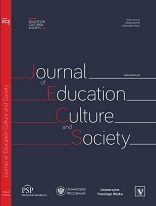Between thought and action: symbolization in depressive position and its external expressions
Between thought and action: symbolization in depressive position and its external expressions
Author(s): Marta IwaszukSubject(s): Social Sciences, Psychology, Behaviorism
Published by: Fundacja Pro Scientia Publica
Keywords: Hanna Segal;Richard Wollheim;William Golding;The Spire;Depressive position;Symbolization
Summary/Abstract: Aim. The paper will revisit nature of symbolization in depressive position with respect to its realization in external reality. Base for the analysis will be Hanna Segal paper Delusions and artistic creativity: some reflections on reading “The Spire” by William Golding (Segal, 1974/1988), enriched with findings she presented in her later paper Acting on phantasy and acting on desire (Segal, 1992/2007), context for the analysis will be provided by Kleinian psychoanalytic framework. Methods. Psychoanalysis core interest is thinking and thought formation. In the paper I will try to move this emphasis on examining pure thinking into exploration of mixture that thought and action create. I will therefore analyse on what tokens mind content can be put into action, and conversely how action is being incorporated into thought. I will perform the study using Hanna Segal interpretation of The Spire by William Golding, which she issued on 1974. I will also reach out to her other papers to broaden the interpretation, including the paper she wrote almost twenty years later on Festschrift for her colleague, philosopher Richard Wollheim (Segal, 1992/2007), that actually proposes the solid linkage between thinking and its expressions in the world. The study will be performed with reference to Kleinian psychoanalytic framework, it will be centred around object relation and anxieties the object arouses (paranoid schizoid and depressive positions), with respect to their impact on thought formation (symbolization, sublimation). Results and conclusions. Analysis of relationship between symbolisation and action enhances understanding of two main responses to depressive position: sublimation and maniac defences, for it explores the extent to which ego benefits/refuses to benefit from internal and external reality. While the rereading Segal interpretation of The Spire allows to spot how creative act enables capturing most difficult internal and external truths, it also reveals – when put in context of Wollheim’s concept of acting on phantasy and acting on desire- that maniac response is less a form of protection and more a direct attack on receptivity and penetrating exploration for their associations to primary scene. Cognitive value. Studying depressive symbolization as a vehicle for acting on either phantasy or desire reveals, that employment of behavioural component forces to revisit maniac defences in light of their actual aftermath in external world. Such refined view onto depressive defences further contributes to improved differentiation of symbolization in depressive position, for it puts under scrutiny relation between ego and performed action. It allows to recognize that in addition to symbol proper (formed by anxiety for object) and symbolic equation (defined by anxiety of object), there is also partly malformed form of symbol shaped by maniac defences (and so by absence of anxiety for object), which disfiguration is best examinable in changes to external reality it makes.
Journal: The Journal of Education, Culture, and Society
- Issue Year: 11/2020
- Issue No: 1
- Page Range: 189-202
- Page Count: 14
- Language: English

